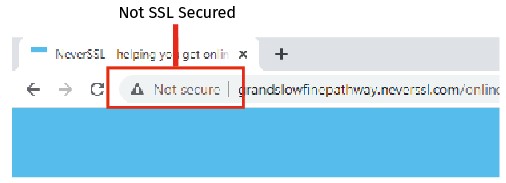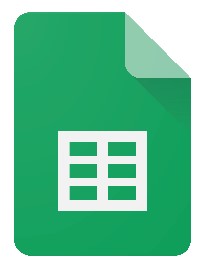Organic SEO (Search Engine Optimization) is a major leader in traffic and lead development. For many, the heart of their digital marketing campaign is their organic SEO.
Organic SEO is a method to attain increased rankings in search engine results pages (SERPS), thus increasing targeted organic traffic. This is accomplished by utilizing strategies such as optimizing web pages, incorporating quality content, optimizing metadata, and developing backlinks.
Although SEO can cost more up-front, it’s considered a smart investment long-term since, unlike paid ads, you retain either ownership of your web properties or the ability to continue to benefit from developed properties after everything is paid; where paid ads the benefits immediately stop when the payments stop.
On-Site & Off-Site SEO
The term SEO refers to Search Engine Optimization both on your website and off your website, or on-site SEO and off-site SEO.
On-page SEO is a term that refers to optimizing the SEO factors that are on your website or domain. Examples of on-site SEO include optimizing for:
- Meta Descriptions
- Title Tags
- Header Tag (H1, H2, H3, etc.)
- Inner link building
- Schema
- Site structure
- E.A.T (Expertise, Authoritativeness, and Trustworthiness)
- Content Writing
- Image Optimization
- And More
Off-page SEO is a term that refers to optimizing SEO factors that are off your website or domain including social media properties, web 2.0 properties, authority website properties or any website outside the ones you own, citation properties, and more. Examples of off-site SEO optimizations include:
- Link Building
- Citation Development
- Anchor Text
- Social Media
- Brand Building (Linked & Unlinked)
- Content Marketing
- Influencer Marketing
- And More
Truth is, there are more than 200 ranking factors, and not everyone has the time or budget to cover them all, so it’s important to develop quality content from the beginning and complete your basic optimizations as you go along.
Technical SEO
As with anything, having the right tools for the job and keeping them working in top shape is essential to success. Technical SEO is focused on the technology and that it is being used properly.
Some tips for improving your technical SEO include:
- SSL secured
- Responsive design/mobile optimized
- Site speed optimization
- No duplicate content
- XML sitemap
- Structured data markup
- Google Search Console and Bing Webmaster Tools setup
Optimizing and managing your Technical SEO is simple, most tools including SEMRush and Ahrefs provide monitoring for many of your site’s technical metrics. After completing your technical SEO before the site launch, most metrics simply need to be monitored with seldom updates.

Keyword Research
Performing proper keyword research will be necessary to satisfy both users and search engines. During your keyword research, you will find what people are searching for, how many, and what format they want it in. This will be essential to your content strategy if it’s going to be successful, and a successful strategy leads to more traffic and thus more sales.
Before performing your keyword research, you need to understand more about your target audience. If we are developing a campaign for auto insurance, some questions we may ask about our audience include:
- What auto insurance are people looking for?
- Who is searching for these?
- When are they searching for auto insurance?
- How are they searching for auto insurance?
- Why are they searching for auto insurance?
- Where are they searching for auto insurance?
Listing the answers to these questions will not only define the intent of the users you are targeting but give you a great starting point to expand on for your research.
There are many different types of keywords, and it’s important to incorporate them all into your campaign. Incorporating each type of keyword into your content schedule will ensure you capture the most traffic possible. Types of keywords:
- Short, Mid & Long-Tail – Keyword length. Example for short is “car insurance”, mid is “purchase car insurance” and long is “purchase car insurance with full coverage”
- Evergreen – Sustainable keywords that remain relevant over time
- Trending – Time-sensitive and trending, for example, “Texas home insurance rates hike”
- Customer Defining – Describes the buyer, for instance, an auto insurance campaign would include “Driver”
- Geo-Targeting – Includes the location you are targeting, for example, “Austin auto insurance”
- Intent Targeting – Focused on the intent of the user during certain points of their buying journey, example, “RV insurance quote”
- Competitor – Pick up some traffic from your competitors, for instance, “the zebra insurance quote”
- LSI – Latent Semantic Indexing are related to your main keyword and are seen as semantically relevant
- Broad, Phrase & Exact Match – Different levels of keywords that match your term with broad match relating to keywords most loosely matching your term and being the exact term
- Product – Keywords related to the product you sell, example “auto insurance” & “home insurance”
- Vertical – Related to your product or service, for example for “home insurance” people may need “flood insurance” or other add-ons
Using your keyword tools like Google Keyword Planner or SEMRush, start creating a list of all the keywords you can find relating to your campaign. This is also a good time to research your competitors to see what they are targeting and how they rank. Competitor research is a great way to see what is working and what’s not when it relates to any portion of the SEO process.
After gathering your keywords, you will develop your content strategy while taking into consideration the relevance of the keywords to your campaign, the amount of authority needed to rank, and the volume of traffic the keyword delivers.
At the beginning of your campaign, it’s best to prioritize the low-hanging fruit that requires low authority from your site. As your campaign develops, you will be more in a position to rank for authoritative, high-traffic keywords. One trick is to see how your competitors are ranking for your target keywords.
Researching keywords for your campaign can be tedious, but incorporating the best available tools into your process can save you time. Tools for keyword research include:
- MOZ, Ahrefs & SEMRush Keyword Tool
- SEMRush Keyword Tool
- Google Keyword Planner
- Google Trends
- Answer The Public
Content Creation
“Content is king” is a term used heavily in the SEO community. Some think the term is overused or simply not true, it’s some people’s belief that simply by developing quality content on and off-site that you can rank any website for anything. Others believe a balance on both sides of the coin leads to a successful campaign.
Content is often times thought of as blog posts or written content, but the truth is in today’s digital universe, content comes in many forms. Examples of common content types used today include:
- Videos
- Live Videos
- Blogs
- Social media posts
- Guides
- Infographics
- eBooks
- Downloadable content
- Podcasts
- Paid Ads
When planning your content, you need to understand your audience and their goals. This is done through research, research that comes in many forms, including competitor research, keyword research, paid ad research, trends research, social media research, and more. For many, keyword research is the heart and where you should begin your content planning.
Once the research is complete, your goal is to know not only the topics you will be writing but why you are writing for your user, how to achieve your campaign goal, how to distribute your content, how your topics should be clustered together, and what will be your metadata (Titles, Descriptions, Etc.).

Link Building
Developing backlinks, or link building, for your website, is the act of getting other websites to link to your website, for example here. In an oversimplified definition, these links are an indicator to search engines like Google that your website is a source of information on that particular topic; thus, the search engines rank you higher for that topic.
In the early days of search engines, the website with the most links would rank highest for the target keyword, this quickly evolved to more intricate ranking algorithms as black hat SEO specialists would abuse this ranking factor and spam un-authoritative backlinks to their website to cheat their way to the #1 rankings.

Strategies for link building very, although some of the more common strategies include guest post outreach and citation development, her are some additional link building strategies:
- Guest Post – Outreach to other websites where you provide a article with a link to your website
- Skyscraper – Outreach to other websites where you can provide a better resource to link to than what they are currently using
- Broken Links – Contacting website where they link to 404 (broken) pages and you provide a new, working resource to link to
- Infographic Promotion – Infographics are a great visual to showcasing data or providing instructions on a task so a well-made infographic can be syndicated to multiple sites with a link back to you the author
- Link Roundups – Link roundups is when a group of SEO specialist agree to link a group of website to one another
- Influencer Outreach – From social media to Youtube and self-hosted websites influencers are everywhere and whether it’s a paid sponsorship or you are a guest, many times you can request a link to your site
- Moving Man Method – Find dead links pointing to shut down businesses
- Edu Resource Page – Many schools offer a resources page on their website for students if you offer a student discount or anything related it is possible they will link to your website
- Podcast – Links from attending or sponsoring podcasts
- Guestographics – Graphics to be used on guest websites
- PR Link Building – Links earned through general public relations for instance if you are featured in the local news and they link to your website
- Image Attribute Links – Gain links from creating images that require an attribution link like Creative Common Images
Not all link-building strategies are listed above. There are many ways to get creative in earning links from other websites.
It’s important to research the websites you are interested in before you reach out for a backlink. Many websites can be spammy from black hat techniques described earlier or the website simply doesn’t receive any traffic. Either way, it is important to know the quality of the website that will be linking to you before you put in the work to earn that link.
Popular Backlinks List
SEO Tools
Today, there are thousands of SEO tools to choose from with many specializing in their own individual purposes. It’s this reason that many SEO professionals have dozens of tools to rely on costing them thousands each month.
A few of our favorite tools include:
- Google Analytics – website traffic data
- Ahrefs – backlink analysis
- SEMrush – SEO research
- Keywords Everywhere – keyword data… everywhere
- Screaming Frog – site crawl for technical SEO
- Agency Analytics – metrics hub & reporting
- Brightlocal – local SEO
- Buzzstream – link outreach
Fusion Digital Marketing is a full-service industry that provides your insurance agency with end-to-end online solutions. Contact us today for a complete analysis of your campaign and proposal for services customized to make your agency succeed in online lead generation.




